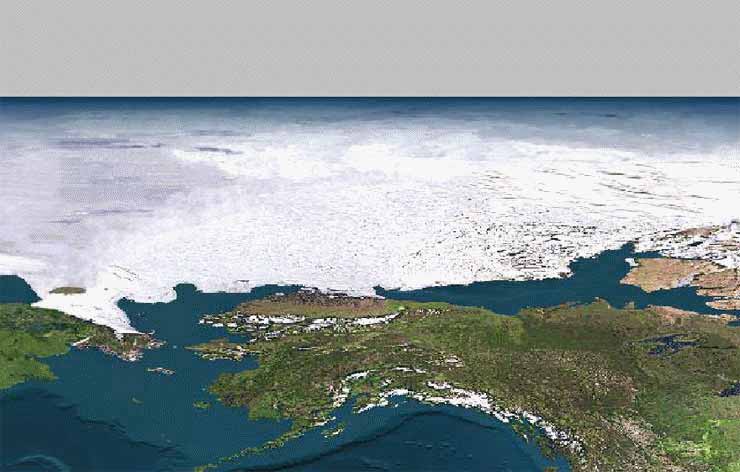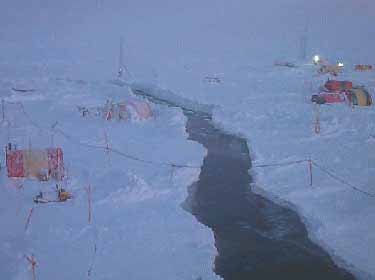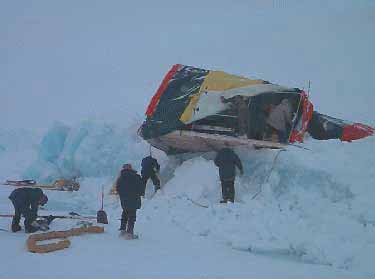
What is sea ice?

The Arctic Ocean gets so cold that it freezes, forming sea ice. The above picture shows a view of sea ice looking down from space. Can you find Alaska in the picture? Sea ice floats on the surface of the ocean and moves in response to winds and ocean currents. Arctic sea ice is, on average, about 3 meters thick. The ice thickness ranges from as little as a few millimeters in ice that is just forming to as much as tens of meters in places where pieces of ice have crunched together. At its minimum extent in summer the Arctic ice pack covers an area around the size of the United States. In winter, the area of the ice cover increases by about 3 or 4 times the size of Alaska!
Even from space, two important features of the ice pack are visible. First of all, the ice pack is bright, reflecting most of the sunlight that reaches the surface (its albedo is closer to one than to zero). It is also a barrier to ships. Only a special kind of ship can sail in the Arctic Ocean. This kind of ship is called an icebreaker.
Let's take a closer look at the ice.

This is a view of Ice Station SHEBA in April 1997. The ice is covered by snow. The bumpy looking areas are pressure ridges where the ice has crunched together.

The ice can break apart, forming leads...

and it can come together, forming ridges!
Sea ice is also found in other cold regions such as the Antarctic, the Bering Sea, the Sea of Okhotsk, and the Labrador Sea.